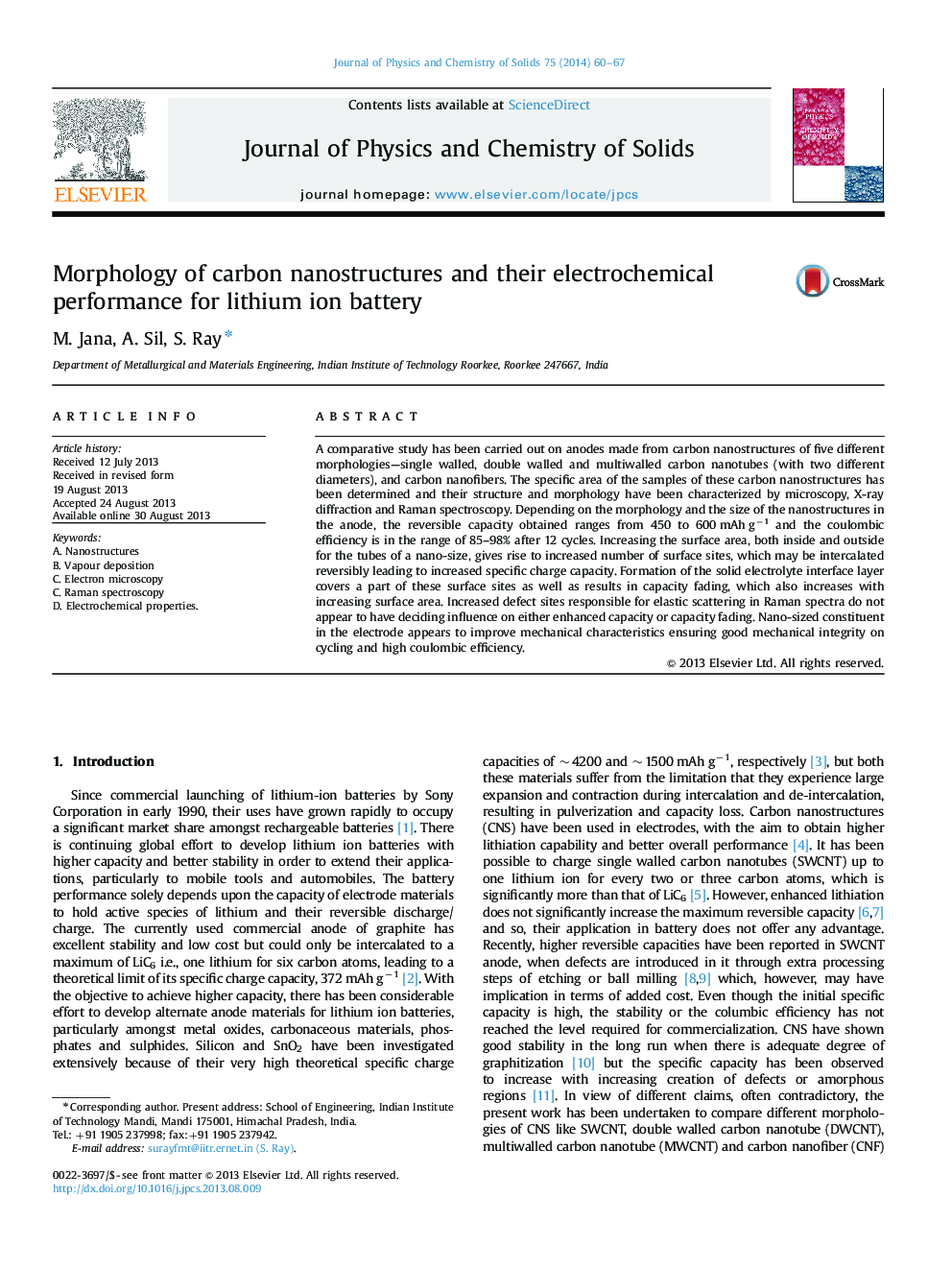| کد مقاله | کد نشریه | سال انتشار | مقاله انگلیسی | نسخه تمام متن |
|---|---|---|---|---|
| 1515947 | 1511541 | 2014 | 8 صفحه PDF | دانلود رایگان |
• Comparative study of five different types of carbon nanostructures.
• Structure–property correlation.
• Reversible capacity and capacity fading both increases with increase in surface area.
• Depending on the types of nanostructure reversible capacity varies from 450 to 600 mAh g−1.
• The coulombic efficiency is in the range of 85–98%.
A comparative study has been carried out on anodes made from carbon nanostructures of five different morphologies—single walled, double walled and multiwalled carbon nanotubes (with two different diameters), and carbon nanofibers. The specific area of the samples of these carbon nanostructures has been determined and their structure and morphology have been characterized by microscopy, X-ray diffraction and Raman spectroscopy. Depending on the morphology and the size of the nanostructures in the anode, the reversible capacity obtained ranges from 450 to 600 mAh g−1 and the coulombic efficiency is in the range of 85–98% after 12 cycles. Increasing the surface area, both inside and outside for the tubes of a nano-size, gives rise to increased number of surface sites, which may be intercalated reversibly leading to increased specific charge capacity. Formation of the solid electrolyte interface layer covers a part of these surface sites as well as results in capacity fading, which also increases with increasing surface area. Increased defect sites responsible for elastic scattering in Raman spectra do not appear to have deciding influence on either enhanced capacity or capacity fading. Nano-sized constituent in the electrode appears to improve mechanical characteristics ensuring good mechanical integrity on cycling and high coulombic efficiency.
Figure optionsDownload as PowerPoint slide
Journal: Journal of Physics and Chemistry of Solids - Volume 75, Issue 1, January 2014, Pages 60–67
